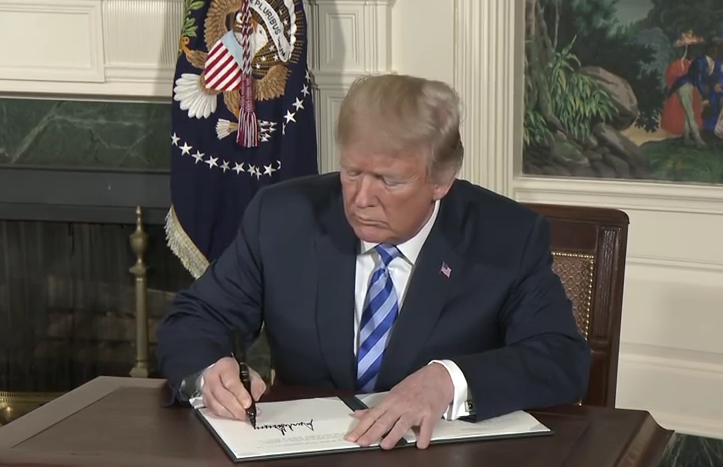By Natalia Castro
Civil service reform is not a new idea; it has been promoted throughout history to give government employees greater protections and maintain the efficiency of government operations. But as reforms have occurred, they have consistently empowered unions and diminished the rights of individual workers. What was once meant to depoliticize and maintain effective standards within our federal workforce has done exactly the opposite — and the American people are fed up.
A Rasmussen report released June 1, 2018, found, 58 percent of Americans adults feel it is too hard to get rid of poorly performing government employees. Only nine percent found the process for removing federal employees too easy.
Calls to “drain the swamp” are louder than ever.
In fact, federal government employees have a 99.5 percent chance of never being fired for cause; the overall separations rate is mere 3.37 percent in the public sector, while in the private sector it is 17.27 percent, according to data compiled from Fedscope. This is not because public sector employees are better than those in the private sector, but instead, because firing practices are so complex in the public sector, they discourage the removal of poorly performing employees.
The federal government firing system was not always so complex, but years of well-intended policy got us to this point.
On Jan. 16, 1883, President Chester Arthur signed the Pendleton Civil Service Reform Act into law. The Act created an open selection process for government employees based on merit rather than politics. While at the time of its passage only 10 percent of federal positions were covered by the law, nearly every president since Arthur broadened the law’s scope; by 1980, more than 90 percent of federal employees were covered in the Act.
The true legacy of the Pendleton Act was the removal of the “spoils system” — or the system in which government employees are hired and fired based on the political affiliation of the current administration. The goal was to create a politically neutral civil service staff in which employees could not be targeted for political differences but instead would be judged on performance.
Most Americans agreed the Pendleton Act was necessary, but in 1912 it was taken a step further. The Lloyd-La Follette Act created the “just cause” standard for removal. It defines “just cause” as those that would promote the “efficiency of the service,” meaning federal government employees could only be removed if the employer could prove their removal promotes the efficiency of the service. The goal was, once again, to protect employees from being removed for political reasons, specifically, it was intended to protect whistleblowers.
The other critical element of Lloyd-La Follette was that the act allowed federal government employees to organize together to protect their rights — allowing the establishment of a federal employee union.
A series of executive orders from 1912 to 1978 amended the act to expand the power of unions to collectively bargain for workers and dispute firing claims. In 1965, President Kennedy signed one executive order which established the U.S. Equal Employment Opportunity Commission (EEOC) to investigate discrimination complaints.
The Civil Service Reform Act of 1978 was created to combat growing uneasiness surrounding the federal government following Watergate. President Jimmy Carter sought to create an even more bureaucratic system for public policy construction. The Act created the Office of Personnel Management (OPM), the Merit Systems Protection Board (MSPB), and the Federal Labor Relations Authority (FLRA) to monitor employee protections and effective management.
Since 1978, unions have used the EEOC, MSPB, and FLRA offices to create a firing system so complex, it is nearly impossible for any manager to complete. Now, public employee unions have abused appeal avenues and employee protection systems to create a firing process that takes anywhere from 170 to 370 days to complete.
As Senator Marco Rubio (R-Fl) explained in a May 2017 press release,“In my home state of Florida, there have been several instances of prescription drugs being diverted, gone missing from VA facilities… the employees involved were ultimately allowed to keep their jobs, or resign with their benefits intact… It is clear that under existing civil service rules and pressure from unions and others, VA leaders have not been able to hold individuals accountable for their actions. Over and over again, we’ve seen the VA attempt to take disciplinary action against an employee, only to see the appeals process prove so complex, lengthy and lenient that real accountability was virtually impossible to achieve.”
Last year, OPM released a guidance plan for government managers to remind them of the tools available to discipline poor performing employees, while the document was not intended to be “comprehensive” it was 22-pages long. Kellie Lunney of the Government Media Executive Group notes, what the OPM guidance plan actually did was remind managers of the rigorous and often lengthy process they must embark on if they wish to discipline an employee.
Since the firing process is so complex, individuals are no longer being fired based on merit and poor performance is simply accepted. Instead, it has returned to the politicized system the Pendleton Act was meant to remove. Since removals based performance are nearly impossible, a manager must be persistent in order to follow through with the entire firing system.
It is no surprise Americans are frustrated with the status of our federal workforce, but this is not a new problem. It has developed through decades of well-intentioned policy that empowered the wrong people. The American people need civil service reform that rebalances the scales that have been tipped far too in favor of poor performing employees and destructive unions.
Natalia Castro is a contributing editor at Americans for Limited Government.







